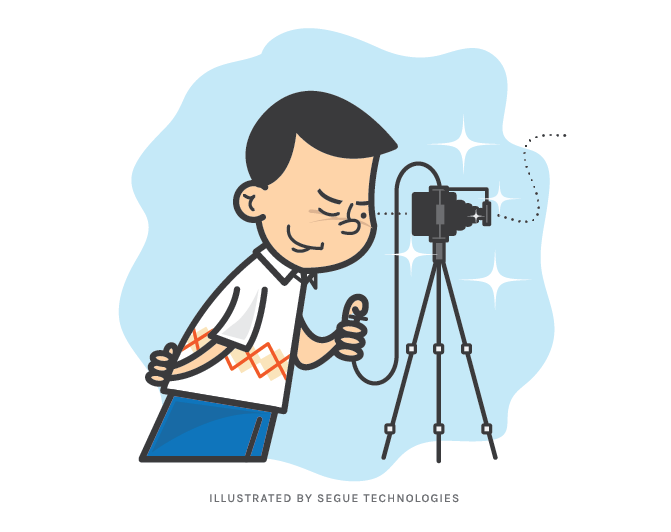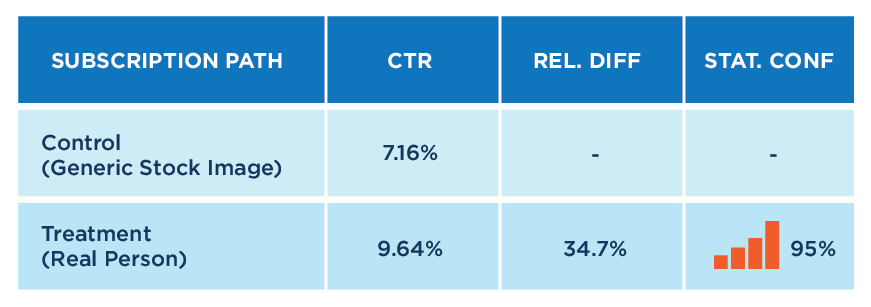Think about the last time you visited a website and clicked on “Customer Service,” “Contact Us,” “Connect with Us” or something similar. Was there a picture of a customer service agent? Did it look like the person actually worked for the company or could you tell right away that it was generic stock photo? Once you realized it was a stock photo did you think twice about the brand’s trustworthiness and where you were spending your time and money?
There are two main resources of photographs that can be used for business purposes: stock photos and hired photographers. Stock photos are generic photos of people, places, and things that are licensed for commercial use and available to anyone who wants to use them. Hired photographers shoot unique photos that can personalize a client’s brand, business, and projects. There’s no doubt about it; stock photos are appealing to many small businesses because they fit tight budgets and are readily available for tight deadlines. However, using stock photos is a risk that can compromise your brands image/reputation and your customers’ loyalty.
Reasons Why You Should Avoid Stock Photography

1. Reputations and Brand Ruined
One mistake many businesses make on their websites when trying to add a human factor is working with stock photography. This plays against the very concept of building trust. A usability finding discovered users do not “buy-in” or react well to stock images on websites because they think it’s fake and immediately do not trust the brand. Familiarity breeds conversion with users. If users can’t relate to the image, they won’t buy into what you’re selling (source).

2. Sending Mixed Messages
Does any of your marketing copy say ‘customized’, ‘unique’, ‘trustworthy, ‘relationship’? These are some of the power words businesses use to describe their relationship with their clients. How then will these values be translated when you pepper your website with canned, stock photography?
3. Making Your Website Look Generic
No matter how professional the stock photo, it will always be someone else’s vision and someone else’s interpretation of the idea/concept. When it comes to your website, why would you want those words to be someone else’s? Using stock photography does not say “unique” or “one-of-a-kind.”
4. Short-Term Cost Versus Long-Term Cost
Obviously, hiring a photographer will have larger initial costs than using stock photos, and it will take time to plan and execute any necessary photo shoots. However, there are also many indirect costs associated with stock photos that go beyond the licensing fee. You also have to factor in the amount of time you’ll spend scouring through hundreds of photos to find the “perfect” photos for your website.
5. Photo Usage and Rights
When you use custom photography, you build a library of images that you own and can use indefinitely. With stock photography, there are often limitations on how you can use the image and for how long.
6. Overused Stock Photography
Stock photos aren’t such a great option when your competitor is using the same photos. If you’re searching for stock photos using key words like “happy customer” or “satisfied clients”, chances are your competitor is too. It’s always important to remember, the better the stock photo, the more people will buy it and the greater the saturation of that photo will be in the market.
Best Practices for Using Stock Photography
If you are in a situation where you have to use stock photos, here are some best practices to help you avoid the problems mentioned above:
1. Use Stock Photos that complement your content
Choose images that truly work with your content and add context. Avoid ridiculous stock photos that no one, let alone your target audience, can relate to. Trust me, no one frolics through a field in a suit while carrying a briefcase, even though that stock photo says otherwise. Take the time to find the best stock photo options out there for your brand.
2. Adjust the Stock Image to fulfill your needs
Remember, you can always tweak a stock image that you find to better fit your needs. You don’t have to stick with something that “kinda” works. Even if you don’t know how to use Photoshop, you can always use other free editing software that is out there. Even small cropping changes can make a difference. If you have to use them, make sure you make your stock images work for you.
3. Don’t Solely use Stock Photos
You don’t always need a photographer to get great shots. If it works with the content at hand, use or take some of your own photos for your website. You can even use an app on your smartphone to make your photos look a little more unique and professional. Here are some great recommendations for the best photo editing apps for Android and iPhone.
Always opt for real photos when you can, but if you’re stuck with stock make sure to follow our best practices to avoid a sticky situation.
When building your new website, remember that small savings now could very well have a much greater cost down the road. Using stock images over custom photography is one of those areas. One of the greatest benefits of using custom photography is that it presents you with the opportunity to show visitors something that is unique and something that they have never seen before. When potential customers visit your site for the first time, their immediate reaction should be “WOW.” At the end of the day, custom photos will go a long way to helping establish your own, unique identity and promoting the image of your company.
Additional Resources:


